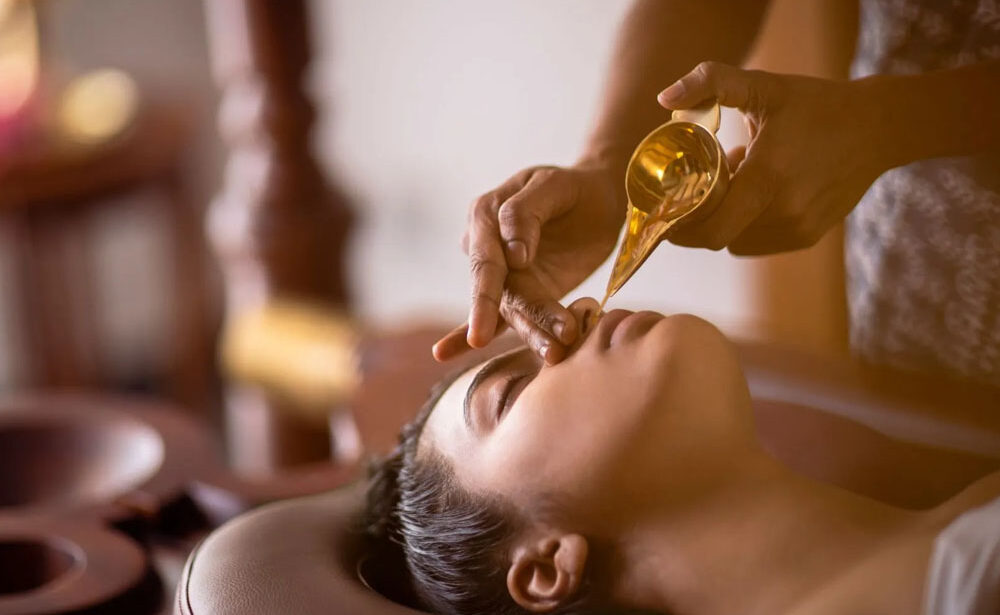What is Panchakarma treatment?
If you have been suffering from illnesses, frequent infections, experiencing undue tiredness, or feeling lethargy and being low, then you are in need of a comprehensive cleansing of the body followed by rejuvenation. According to Ayurveda, the body’s principal energies Vata, Pitta, and Kapha need to be well balanced to ensure good health. If one or more of these energies go out of balance, it affects health. This can lead to a build-up of unwanted wastes or toxins in the body. The presence of such toxins in the body impedes normal physiological functions subsequently leading to various illnesses..
The presence of abnormal levels of metabolic toxins in the body can lead to the blocking of energy channels of the body resulting in a weak immune system. This is why it is important that toxins be removed from the body periodically so that the body is cleansed and rejuvenated. This can help ensure optimal health. Panchakarma treatment in Ayurveda is one of the most effective ways to detox the body and help in rejuvenation.
What is Panchakarma in Ayurveda?
Many may wonder what is Panchakarma or what is Panchakarma treatment. Panchakarma is an Ayurvedic therapy that involves Pancha (five) karmas (actions) that helps in cleansing the body of accumulated toxins with an aim to restore health. Your physician, who evaluates your various physical and mental parameters, would be the best judge to choose the right cleansing procedure/s for you. Cleansing is done by purging toxins through different routes.
How does Panchakarma help?
Among the various positive effects on the body, Panchakarma therapy helps to rekindle the digestive enzymes, or Jataraagni. Optimal digestion and absorption helps to improve the production of Ojas that imparts vitality to the body. The Doshas that are imbalanced would be restored in a natural way. This is stated to be the best way to ensure good health. Ayurveda believes that Panchakarma purifies both the body and the mind. The disease-causing factors are removed, thus ensuring a state of wellness.
What is the origin of Panchakarma Chikitsa?
The Panchakarma Chikitsa or Ayurvedic treatment process aimed at cleansing the body of toxins is not new. It is a part of the Ayurvedic treatment philosophy that originated nearly 5,000 years ago. The sages who developed the Ayurvedic principles and wrote treatises referred to this treatment procedure in their texts. Images of Lord Dhanwanthari, who is considered the progenitor of Ayurveda, is shown holding a leech in his hand for a bloodletting procedure to remove localized impure blood. The Charaka Samhita written more than 3,000 years ago refers to the concept of Panchakarma. Since then, the system has evolved over the years and processes like bloodletting are still being practiced using modern tools to help resolve certain illnesses effectively.
Panchakarma treatment: The preparation and process
What are the preparations involved?
Before Panchakarma treatment is carried out, certain preparatory steps are needed. This helps ensure the body is prepared for the process of detoxification. This is necessary as a sudden expulsion of toxins may affect the body. The Purvakarma or preparatory processes include:
- Snehana or internal oleation by oral consumption of the prescribed medicated ghee in increasing dosage over 5-7 days. This is done with an aim to extract the toxins from the cellular level to the stomach for the ensuing purging procedure.
- Swedana involves generating controlled heat on the body by massaging it with prescribed oils or powders and herbal steam. The sweating process liquefies the toxins making them easy to be eliminated.
What are the 5 Panchakarma steps?
Once the preparatory processes are complete, the body is now ready for the controlled elimination of toxins. The ideal Panchakarma procedures for you are prescribed by your physician and performed carefully under his/her watchful eyes. The procedure is carefully customised according to the condition of the individual.
- Vamana: This procedure involves induced vomiting to help balance the Kapha and is indicated in respiratory illnesses and skin ailments.
- Virechana: Pitta when in excess causes digestive problems. The prescribed purgative helps purge the toxins collected in the stomach so that the balance of Pitta is restored.
- Vasti: This procedure involves administering of prescribed oils and decoction combinations through the ano-rectal route to help balance the Vata.
- Nasya: This procedure done through the nasal orifice helps decongest the sinuses and heal abnormalities of the cranial nerves.
- Raktamokshana: This traditional method makes use of leeches or sterilized sharp instruments to remove impure blood from the body.
What happens after Panchakarma?
Once the Panchakarma procedure is complete, the rejuvenation phase commences. The use of a balanced diet, exercises through Yogasanas, Abhyanga (oil massages), and meditation help to rejuvenate the mind and body. This helps to prepare the body for a normal life once the procedure is complete.
What are the benefits of Panchakarma?
- Panchakarma treatment is an Ayurvedic therapy that helps to remove toxins and impurities from the body and mind.
- The process helps to maintain the equilibrium of Doshas and thus restore a state of good health.
- It helps optimize the functions of the gastro-intestinal tract, the nervous system, the cardio-vascular, the respiratory, the reproductive, the endocrine, the lymphatic systems.
- It helps in revamping the immune system and enables the body to resist infections.
- It helps in ensuring the relaxation of the body and mind. It helps relieve stress.
- It rejuvenates the body and can help slow down the aging process.

